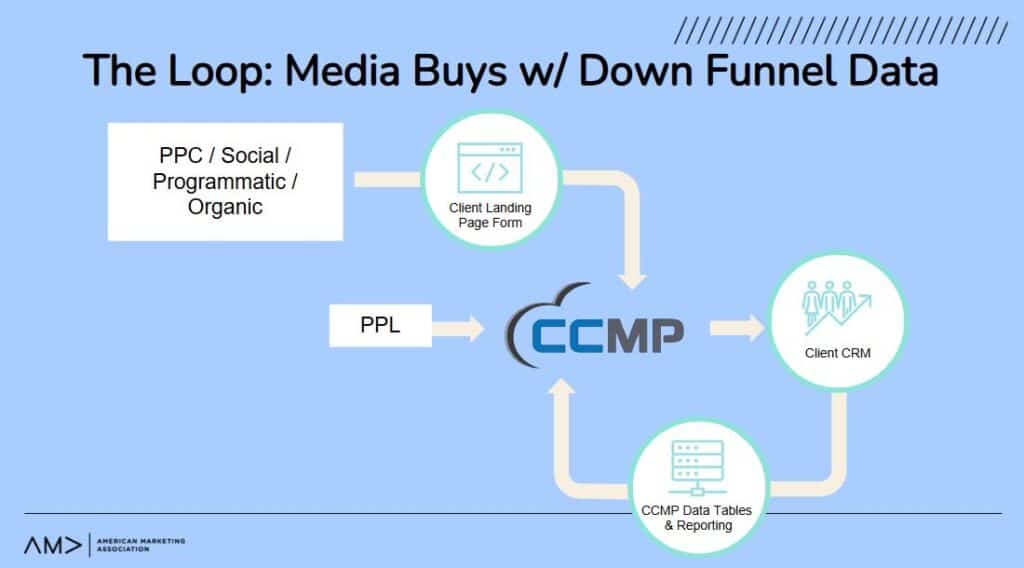Performance Marketing in 2025: What’s in Store?
From its earliest days more than 30 years ago, to its advertising dominance today, digital marketing has become a critical component to business growth across the globe. Today, digital makes up more than three-quarters of advertising spend in the U.S. dwarfing traditional media. And with AI’s plunge into the pool, the transformation of digital marketing is likely to reach tidal wave proportions in the coming decade. From advanced analytics that create more personalized customer experiences to automations that allow for unparalleled scalability, AI will be at the forefront in 2025 and far into the future. But it’s not the only component to effective performance marketing this year. To find out what’s around the bend, we asked a few of the experts who work behind the scenes at CloudControlMedia to weigh in.
What’s Happening in Social Media Advertising in 2025?
Benefiting from AI capabilities and bolstered by consumer expectations, social media advertising is more dynamic and personalized than ever. To compete effectively on social media platforms, you need to focus on the channels your audience uses most and send them messages that resonate with where they are in the sales cycle. As to the demise of social media giant TikTok, Paid Media Manager Kelsey McCreary says don’t count the channel out yet. Since the Supreme Court’s recent ruling upholding a TikTok ban and the more recent stay of execution promised by the incoming administration, there may be uncertainty around the platform, but Kelsey is watching closely.
“The future for TikTok may be murky,” says Kelsey, “but I have a feeling it won’t be going away completely.” And Kelsey suggests that marketers keep their eye on YouTube opportunities. As the second largest search engine in the world, YouTube is already an obvious choice for advertising. Even though Kelsey says many creators are exiting the platform to create their own outlets, YouTube is an important advertising channel. She warns, though, that YouTube needs to keep up.
“YouTube needs to continue to evolve,” says Kelsey. “It cannot stay stagnant or something else new and shiny is apt to swoop in and steal market share.”
PPC Search Advertising for 2025
Whether on YouTube, Google, or Bing, search should remain a critical component to your digital strategy. It allows you to reach an audience actively looking for what you offer. And even as the behemoth Google fights the Justice Department attempts to break up its monopoly, it still holds a market share of more than 90 percent. Google isn’t going anywhere in 2025 or 26 or 27. The engine continues to expand, evolve, and scales its use of AI.
According to Associate Director of Digital Media Larry Harrington, AI in search is a given this year. He expects that AI ad units will soon become more widely available and Larry suggests that organic AI overview results will soon be accompanied by ads.
“They might be designed as what else to consider, in addition to the SEO-based AI overview,” says Larry. “My guess is that targeting for these ads will be keyword based.”
As to Google search in general, we already know that the search engine does quite a bit to keep you from leaving the search engine –pulling information directly from websites so you never need to click to the website. Larry predicts even more of the same.
“Google’s own results will take up more space above the fold,” says Larry “with the search engine prioritizing ways to keep you from clicking off the search engine. Quality Score will matter more than ever in 2025 with advertisers not only vying against competitors, but also Google.
The Evolving SEO Landscape in 2025
One important way to improve Quality Score is to leverage search engine optimization. It’s not enough for your paid landing pages to be well-optimized; your entire online presence needs to send a consistent message of authenticity, quality, and relevancy.
With the cataclysmic changes to search algorithms in 2024, Director of SEO Joseph Colarusso says SEO is more important than ever. The SEO landscape is ever evolving and is expanding far beyond owned media properties.
“With users prioritizing social media platforms as search engines, businesses need to expand the way they think of SEO,” says Joseph. “It’s not enough to have an optimized site. You need to think of all the ways prospects might find you online—including places like YouTube and Reddit—and make sure your presence across the internet is optimized for search.”
Joseph notes that AI has also changed the way people conduct searches. Instead of relying solely on a search engine like Google, users may be having conversations with ChatGPT or Claude.
“Leveraging how people actually speak focusing on user intent and using long-tailed keywords will become increasingly valuable, especially considering how AI overviews show up in search,” says Joseph.
Cultivating Organic Social Media in 2025
Brand authenticity has always been at the foundation of a good internet presence, but its importance is critical in 2025. And active social media engagement is one way to stay relevant in front of the stakeholders you most want to attract. According to Director of Social Media Marcy Ansley, 2025 social media needs to be a multifaceted conversation. Organizations need to speak, engage, and above all listen.
“Brands that want to truly be successful with social media need to be listening to what’s going on – and not just in their own industry,” says Marcy. “Some of the most iconic social media brands aren’t necessarily creating trends but often they’re trend jacking; they’re tapping into trends and making them their own. Finding a creative way to make these movements their own can be hugely beneficial. And while doing it successfully can be a challenge, thankfully, there’s a new team member to help jumpstart those creative trend jacking: AI. Artificial intelligence can help brainstorm campaigns, develop content, and so much more.”
There’s a lot to keep up with in performance marketing this year. Don’t have time? We do! Reach out to any one of the experts at CloudControlMedia or check out our services and find out where we can fill in the blanks on your team. Contact us today.
~Linda Emma leads the owned media team at CloudControlMedia















